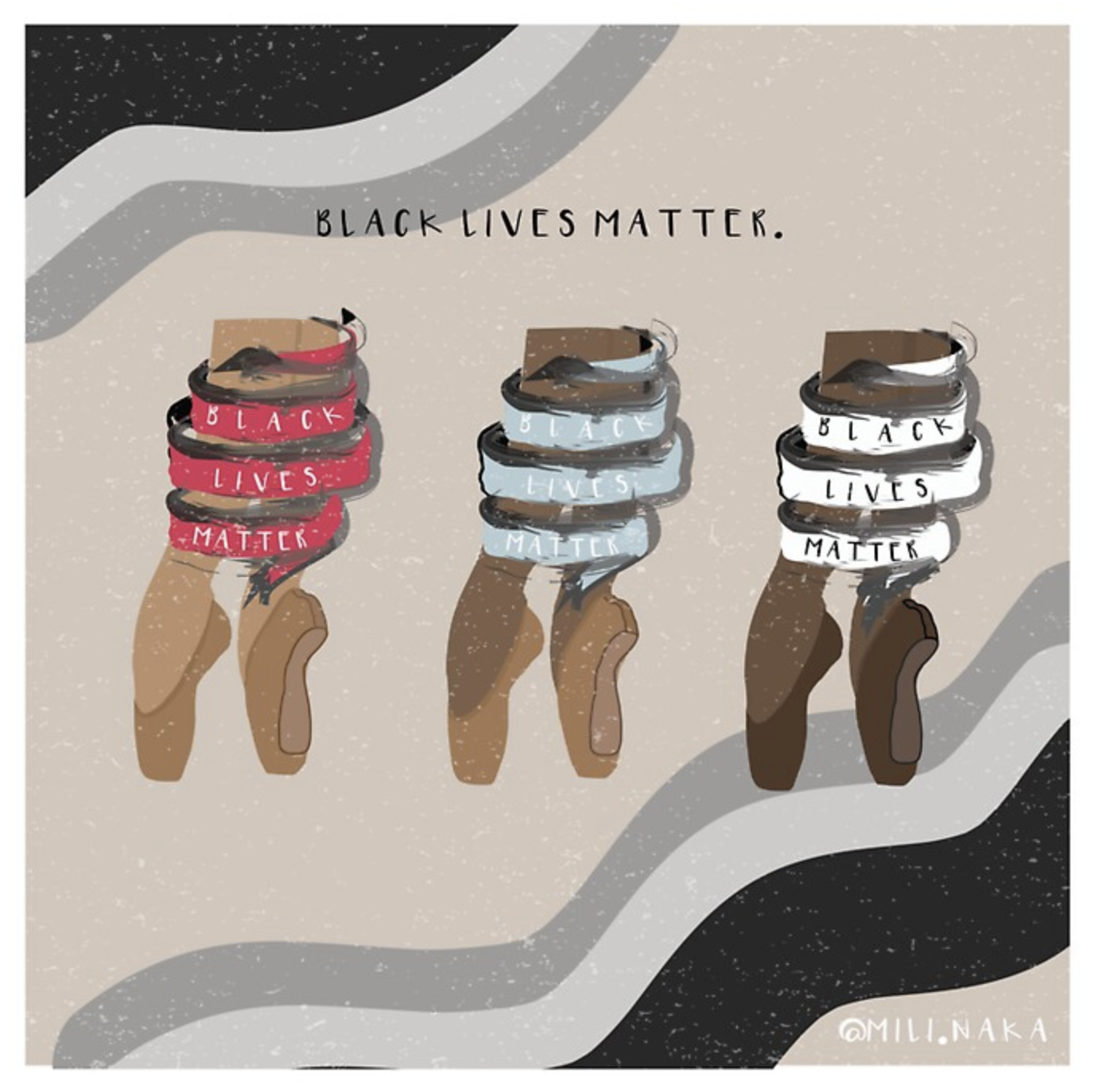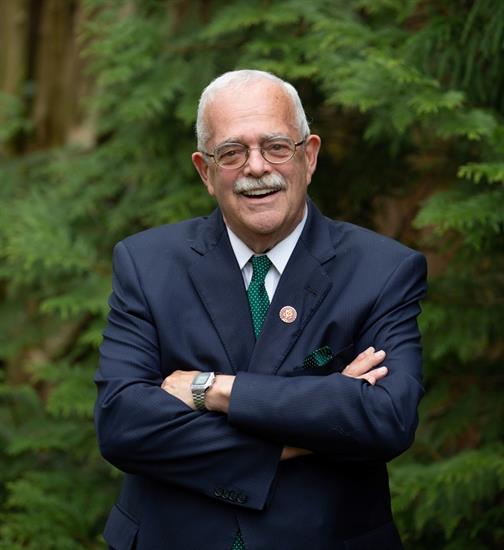Racism in Dance: How the Dance World Needs to Change
We did not have a featured artist this week, unfortunately, but we’re still addressing the arts by discussing racism in dance, how it’s systemic, and how it unfairly represents the experiences of BIPOC.
Alicia Mullikin is a first generation Mexican-American who has experienced a myriad of microagressions during her career that have presented significant hurdles to her progress as a dancer. She and eight fellow dancers of color compiled a list of their personal experiences with the lack of representation. It includes issues such as:
- Saying “ballet is the foundation of all dance.”
- Refusing to cast someone in a role because of their race.
- Saying someone doesn’t have a “ballet body” because their body doesn’t fit the image of the thin ballerina
- requiring women of color to wear pink tights
- insisting black women “tame” their natural hair
- The production of pointe shoe colors were limited to pink/nude until 2018, when a variety of skin tones began arriving on the market
- Allowing a majority of cis white males to dominate the choreography and leardership roles
- Asking Black and Brown dancers to “be a little more urban/street” (and more broadly, wanting POC dancers to fit within stereotypes).
- Not teaching the history of jazz, tap, hip hop, belly dancing, and more.
- Making the assumption that all black and POC people who enter a studio are there to take hip hop
- Not recognizing the intersections of race and class or the implications that Black and Brown families have barrieres to generating wealth
- not all families can afford equipment, travel, formal dance classes, tickets, etc
- Funding/Granting/Producing/Promoting dancers, choreographers, and companies that engage in cultural appropriation.
- Using the one Black or Brown person on your poster or recruitment literature, using them as your diversity token dancer
To read Mullikin’s full list, click here. She closes out her list of grievences by saying this,
“As White and non-black POC in the dance community, complacency with systemic racism prevents us from seeing all the ways we benefit and participate in it…these structures run deep and are ingrained in the very fibers of our country, communities, and studios, BUT it is work that we must do dutifully…The next generation of dance artists deserve better than the racist structures we had to put up with.”
The dance community has failed in many ways to recognize styles of dance from other cultures and valuing them equality to ballet, modern, and contempory. J. Bouey, member of the Bill T. Jones/Arnie Zane Company, founder and co-host of The Dance Union Podcast, and choreographer explores this issue in his article Are College Dance Curriculums Too White? He explains that often times, schools with BFA or MFA programs in dance only require ballet, modern, and contemporary, but leave jazz, hip hop, latin, vogue and others as electives. These programs typically require a ballet assessment as well. Policies like these neglect to consider many students may not have had access to formal class or traditional ballet training. It also invalidates the techniques and uniqueness of other styles of dance.
Ballet, modern and contemporary aren’t called “white dance” even when their history and culture is primarily that.
J. Bouey claims, “White culture defines what is considered normal. Things and practices that don’t require adjectives and names to define them fit into that normalcy. When the word “technique” is used to talk about a dancer’s grasp of ballet vernacular, we have placed it into the norm; into white dance.”
White supremacy in dance has assigned a higher value to certain styles over others, to classical non lyric music over modern, mainstream music, it values a silent audience over an involved, active one, and it values form and objectivity over emotion and subjectivity.
White culture in many ways is about the theft of other styles, and often pillages and appropriates cultural aspects, dress, and techniques without paying homage to the origins. “In his book Dancing Revelations, dance scholar Thomas DeFrantz writes of how George Balanchine and Twyla Tharp absorbed Africanist aesthetic devices in their creative processes without working with the Black bodies that first formed these aesthetic devices.” Ruth St. Denis appropriated indigenous American, South Asian, and East Asian cultures as part of her dance style and practices.
As J. Bouey said, “white supremacy operates best in the shadows” but here and now, we can begin reshaping college curriculum to include all styles of dance, offer scholarships to dancers of color — whether they have formal ballet training or not — and to acknowledge the achievements made by dancers of color.
Rohina K. Sehar in her article How Ballerinas of Color Are Changing the Palette of Dance, she describes ballet in this way “……[it] prizes the physical and emotive attributes that set European nobility apart from commoners ― poise, daintiness, adherence to etiquette and hierarchy, erectness of carriage. So it seems that ballet and whiteness are inseparable…”
Dance scholar Brenda Dixon Gottschild said European standards deem Black dancing traditions as “vulgar, comic, uncontrolled, undisciplined and, most of all, promiscuous.” because it contrasts the balletic principle that the rod straight spine is where all movement flows from and returns to.
Sehra stresses that the stereotypes surrounded dancers of color are harmful and completely invalidate their talents and contributions to the industry, “This has allowed ballet to normalize ugly racial and gender stereotypes as canonical.”
There have been many accomplishments by dancers of color that cannot be ignored. Misty Copeland was the first female African-American to become a principal dancer at the American Ballet Theater in 2015. Choreographer Arther Mitchell’s Dance Theatre of Harlem broek a 300 year rule by giving tone-true tights and pointe shoes to dancers of color. In 2019, Charlotte Nebres became the first black actor cast as Marie in the New York City Ballet’s production fo the Nutcracker.
Courtney Taylor Key, accomplished freelance ballet dancer and creator of the Negus Ballerina Project. “…If Black and brown students had more access, it wouldn’t be such a culture shock. It wouldn’t be so foreign to see someone doing something you only think about and keep to yourself. Sometimes seeing is believing. If more children of color saw what they can become, they would believe that it is possible.”
Daphne M. Lee was the 2017 Miss Black America winner and a dancer with the Dance Theatre of Harlem in NY. She has been dancing professionally for a decade and is currently with the Dance Theatre of Harlem in New York. Recently she’s begun questioning the strict rules surrounding hair in ballet culture. “…Can I still have a bun if it’s cornrowed? What about a French twist made from flat twists? Let’s not forget that many of these ballets are based on a certain hair texture but today, dance companies and dancers are questioning what ballet beauty looks like in the 21st century.”
Miranda Silveira, dancer with the San Francisco Ballet, has always felt a bit anxious about her kinky natural hair but says, “It takes courage and a lot of self work to accept that you are you and what matters is how you dance and not what type of hair you have or skin color you are.”
Brian Shaefer reveals how dance can be an importance artistic commentary on social issues.
“…It has also at times reflected the country’s indifference to ongoing racial violence and discrimination, allowing discourse to lean on the wobbly pillar of “diversity” instead. But as the Black Lives Matter movement has returned race to the center of the national debate, it has galvanized some artists of color and challenged white dance audiences to confront their discomfort with racial issues.”
Artistic Director Robert Battle comments that dance has always carried emotions ont eh body, onto the stage, and out into the world to reexamine again. He says that the foundations of modern dance fearlessly address the issues of today.
Many artists feel compelled to use dance as a mode to address white supremacy, police violence, and stereotypes. Some dancers have found that by abstracting difficult subjects, it helps their audience individualize the experiences.
If you would like to support the dance community even during this time of social distancing, you can attend online dance classes, donate to black dancers when they’re performing live stream performances, and most importantly educate yourself. There are a variety of books like:
-
- CHOKEHOLD: Policing Black Men by Paul Butler
- The New Jim Crow by Michelle Alexander
- Post-Traumatic Slave Syndrome by Dr. Joy DeGruy
- White Fragility: Why It’s So Hard For White People to Talk About Racism by Robin DiAngelo
Dance books related to racial inequalities that persist in the dance community are also available. To see a list, click here.
Dance performances to watch that analyze racism include:
- Jacob Jonas The Company performs “AN ARTIST’S DUTY IS TO REFLECT THE TIMES,” choreographed by company member Mike Tyus
- Royal Ballet principal Marcelino Sambé performs “I Can’t Breathe“
- ink, a dance film by Camille A. Brown and Dancers
- Camille A. Brown’s Black Girl: Linguistic Play
- Alvin Ailey American Dance Theater performs Ode, choreographed by company member and resident choreographer Jamar Roberts
- Donald Byrd’s extraordinary SHOT
The changes for the dance community begin when companies, universities, choreographers, artistic directors, and performers acknowledging their implicit racial biases, identify the systemic racism, dismantal racist polices, and focus not only on token diversity, but true inclusion by recognizing BIPOC dancers and their contributions.
Additional indepth scholarly reading about dance, racism, and white supremacy can be found here:
https://www.jstor.org/stable/1478277
Perpener, J. (2000). Dance, Difference, and Racial Dualism at the Turn of the Century. Dance Research Journal, 32(1), 63-69. doi:10.2307/1478277
www.jstor.org/stable/10.5406/j.ctt130jthx.11
BOSSE, J. (2015). Performing Race, Remaking Whiteness. In Becoming Beautiful: Ballroom Dance in the American Heartland (pp. 97-120). Urbana; Chicago; Springfield: University of Illinois Press. Retrieved August 12, 2020
https://www.jstor.org/stable/j.ctt1w8h3z3.15
Brodsky, J., & Olin, F. (2018). Jawole Willa Jo Zollar: Urban Bush Women: The Power of Dance to Promote Cultural Inclusivity and Community Engagement. In Junctures in Women’s Leadership: The Arts (pp. 187-203). NEW BRUNSWICK, CAMDEN; NEWARK, NEW JERSEY; LONDON: Rutgers University Press. doi:10.2307/j.ctt1w8h3z3.15
https://www.jstor.org/stable/10.1525/phr.2014.83.3.487
Marcus, K. (2014). Dance Moves: An African American Ballet Company in Postwar Los Angeles. Pacific Historical Review, 83(3), 487-527. doi:10.1525/phr.2014.83.3.487
https://www.tandfonline.com/doi/pdf/10.1080/15290824.2016.1238708
Julie Kerr-Berry (2016) Peeling Back the Skin of Racism: Real History and Race in Dance Education, Journal of Dance Education, 16:4, 119-121, DOI: 10.1080/15290824.2016.1238708



